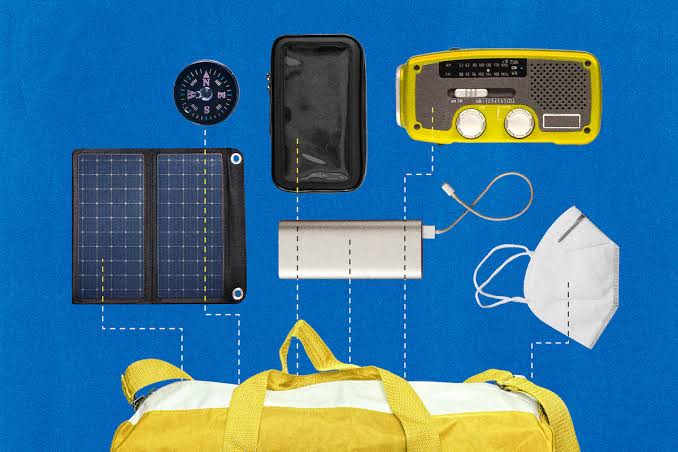Disaster relief operations are often complex, requiring quick decisions, efficient coordination, and the ability to reach affected communities in challenging environments. Over the years, technology has played a critical role in improving disaster management, and today smart gadgets are revolutionizing how relief efforts are carried out. These devices not only enhance communication and coordination but also improve the speed and effectiveness of rescue operations. With real-time data, automation, and smart connectivity, they are proving to be invaluable tools for humanitarian work.
Enhancing Communication in Crisis
During a disaster, communication systems are usually the first to break down. Traditional networks may collapse due to damaged infrastructure, leaving affected communities disconnected. Smart gadgets help bridge this gap by ensuring that rescuers and victims stay connected.
Portable satellite phones, wireless hotspots, and smart walkie-talkies allow relief teams to maintain communication even in remote or heavily affected regions. These gadgets support quick information sharing, enabling responders to locate victims, organize resources, and update central command in real time. Smart drones with live streaming capabilities also help in relaying critical information where physical access is impossible.
Real-Time Data Collection and Analysis
In disaster situations, information is often scattered and incomplete, making it difficult to assess the scale of damage. Smart gadgets can help by collecting real-time data and feeding it into disaster management systems.
Wearable devices with sensors can monitor the health of victims and relief workers, providing information on heart rate, temperature, or oxygen levels. Smart environmental sensors can detect hazardous gases, water contamination, or structural weaknesses in buildings. When combined, this data gives rescue teams accurate insights, allowing them to prioritize areas most in need of attention.
Improving Search and Rescue Operations
Search and rescue is one of the most critical phases of disaster relief. Smart gadgets, especially drones, robotic devices, and infrared scanners, play a major role in locating victims quickly.
Drones equipped with thermal imaging cameras can detect body heat under rubble or in flooded areas. Robots designed for disaster zones can crawl into unsafe spaces where humans cannot reach. Portable GPS trackers help rescue teams navigate and mark locations for further action. These gadgets not only save time but also reduce the risk faced by human rescuers.
Supporting Medical Assistance
Medical response is a vital part of relief operations, and smart gadgets are making healthcare delivery more efficient in disaster-hit areas. Portable diagnostic kits, smart wearables, and telemedicine tools help provide immediate care even in the absence of full hospital facilities.
Smart medical gadgets allow doctors to remotely monitor patients’ vitals, prescribe treatments, and even perform minor procedures with remote guidance. In large-scale disasters, mobile medical units equipped with smart gadgets can offer life-saving care on-site, reducing the time victims spend waiting for treatment.
Streamlining Logistics and Resource Management
One of the biggest challenges in disaster relief is ensuring that food, water, shelter, and medical supplies reach the right people at the right time. Smart gadgets play an important role in tracking and managing resources effectively.
Smart inventory systems and RFID tags help relief agencies monitor supply distribution and prevent shortages or duplication. Mobile applications can be used to register victims and keep track of aid delivery. This ensures fairness and efficiency in resource allocation, making sure that those most in need are reached quickly.
Facilitating Early Warning Systems
Disaster preparedness is just as important as response. Smart gadgets contribute to early warning systems that help communities prepare before disaster strikes. Smart sensors can detect unusual seismic activity, rising water levels, or weather patterns that indicate potential floods, hurricanes, or earthquakes.
When combined with mobile applications, these gadgets alert communities instantly, allowing them to evacuate or take safety measures. Such proactive use of technology significantly reduces casualties and damage, strengthening overall disaster resilience.
Enhancing Coordination Among Relief Agencies
Disaster relief usually involves multiple organizations, including government agencies, NGOs, and international bodies. Coordination can be challenging without proper systems in place. Smart gadgets make collaboration smoother by providing platforms for shared communication and planning.
Tablets, smartphones, and mobile apps specifically designed for disaster management help teams track progress, allocate responsibilities, and share updates. Real-time mapping applications also allow all stakeholders to see the same information, reducing confusion and duplication of efforts.
Challenges in Using Smart Gadgets for Disaster Relief
While the role of smart gadgets is significant, there are challenges that need to be addressed for wider adoption. High costs, lack of training, and limited access in underdeveloped regions can hinder their use. Additionally, gadgets are dependent on power sources and connectivity, which may not always be available in disaster-hit areas. Developing portable solar chargers and offline-capable devices could help overcome some of these barriers.
Conclusion
Smart gadgets are reshaping disaster relief operations by making them faster, safer, and more efficient. From enhancing communication to enabling real-time data collection, supporting medical assistance, and improving resource distribution, these tools are proving to be game-changers in humanitarian work. As technology continues to advance, the integration of smart gadgets into disaster relief will only grow stronger, ensuring that affected communities receive help more effectively and with greater speed.




Nice
Awesome
Smart gadgets should be made more accessible. It would lessen the challenges in using smart gadgets for disaster relief.
The gadget really help more
Having a personal one is more adviceable now